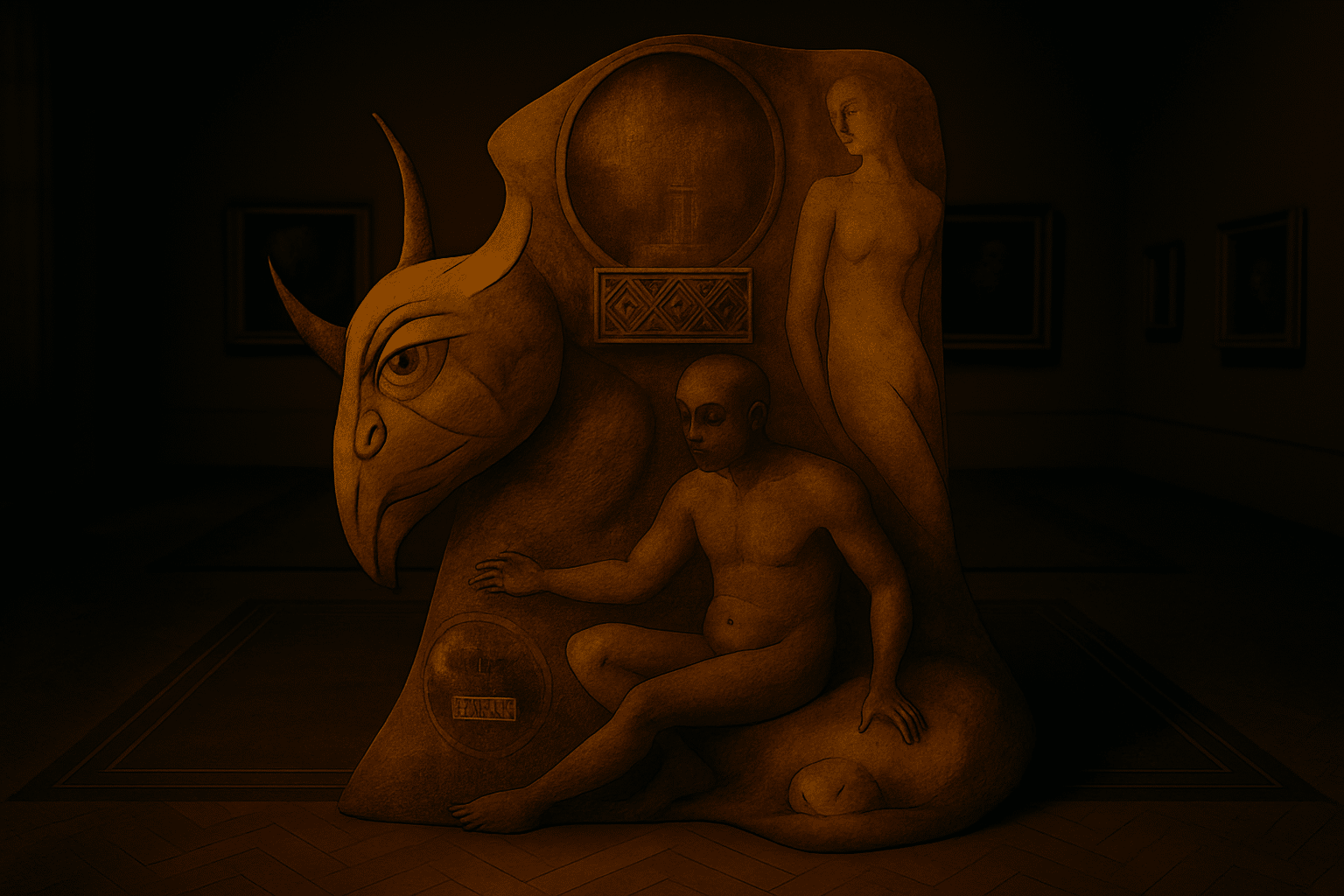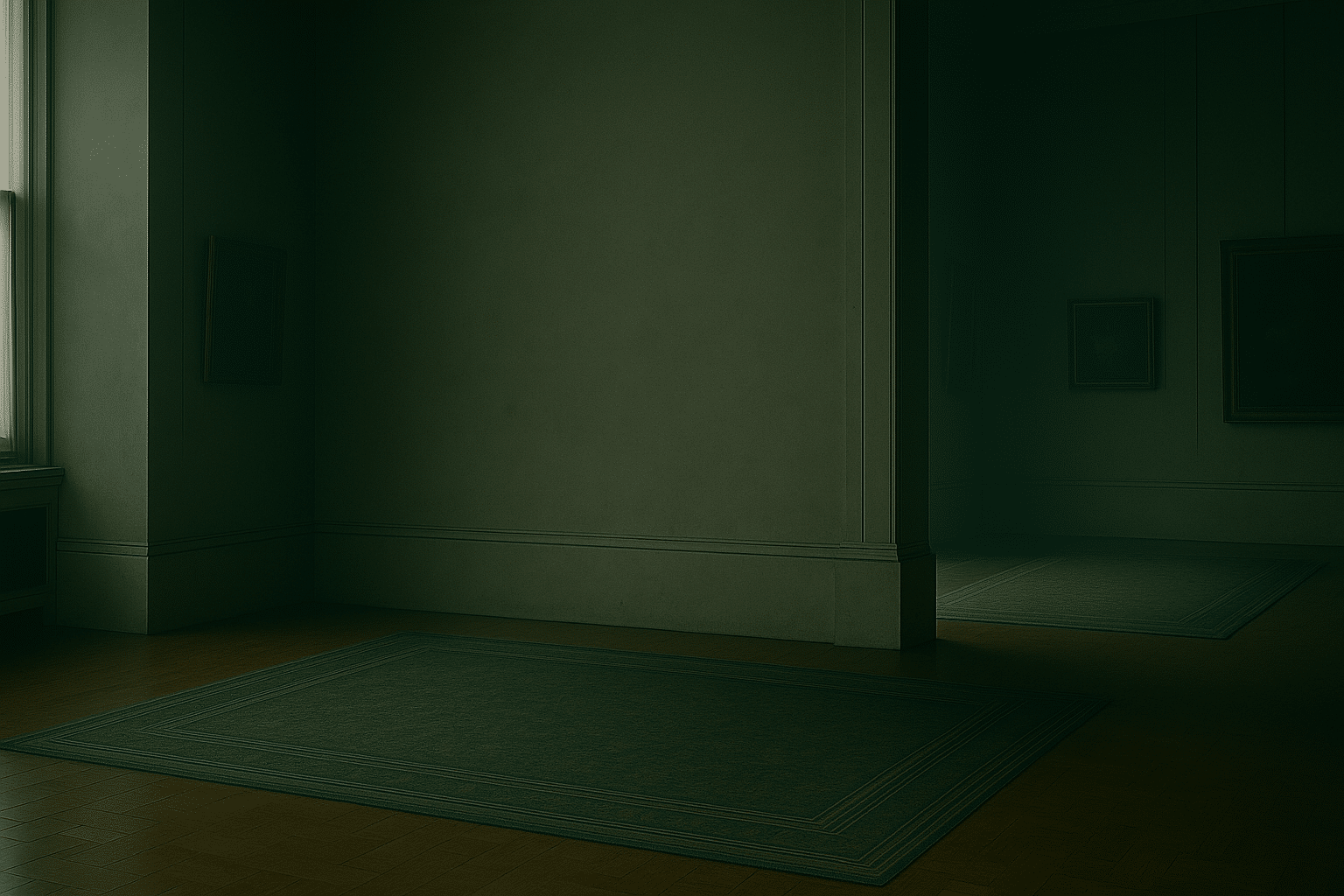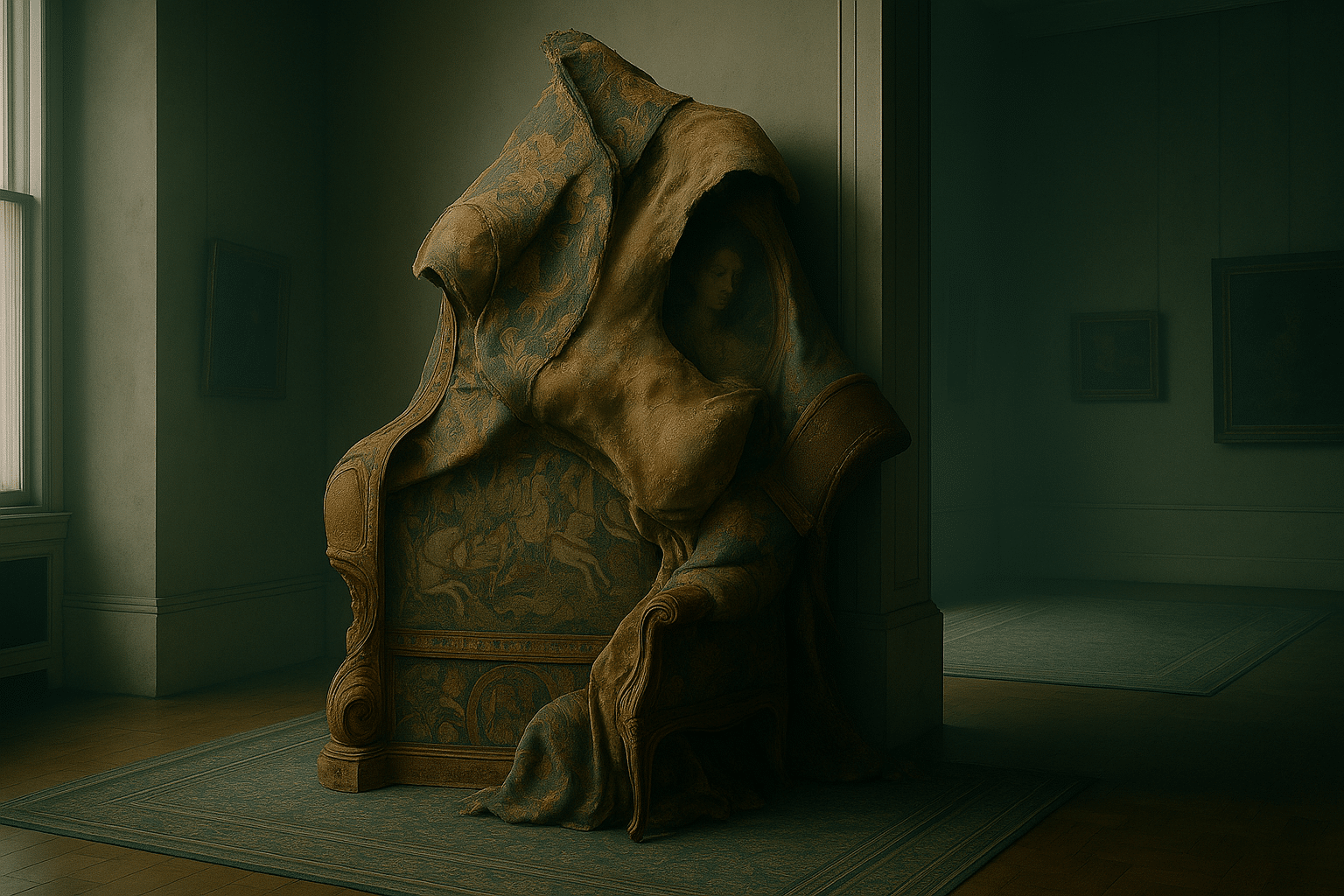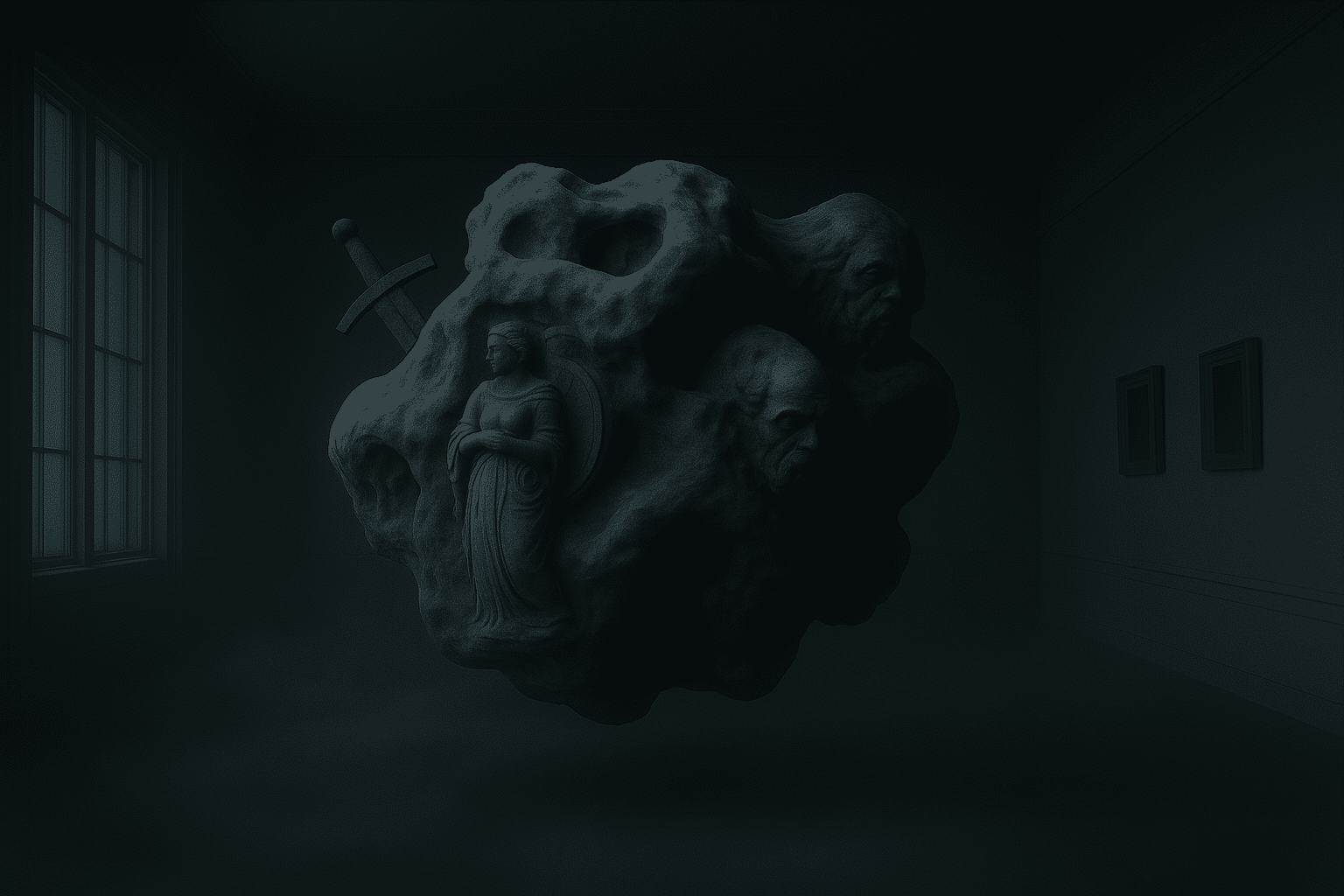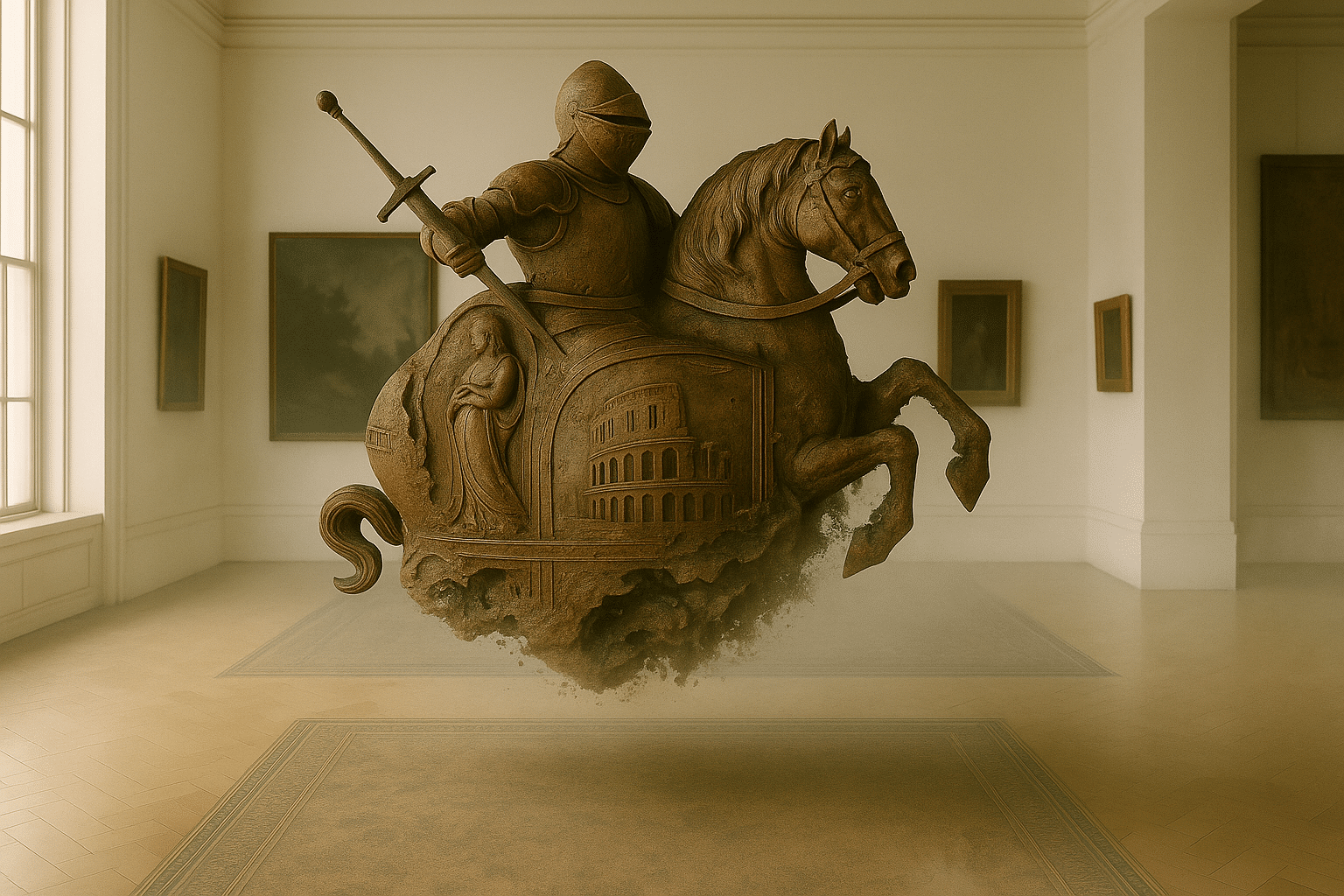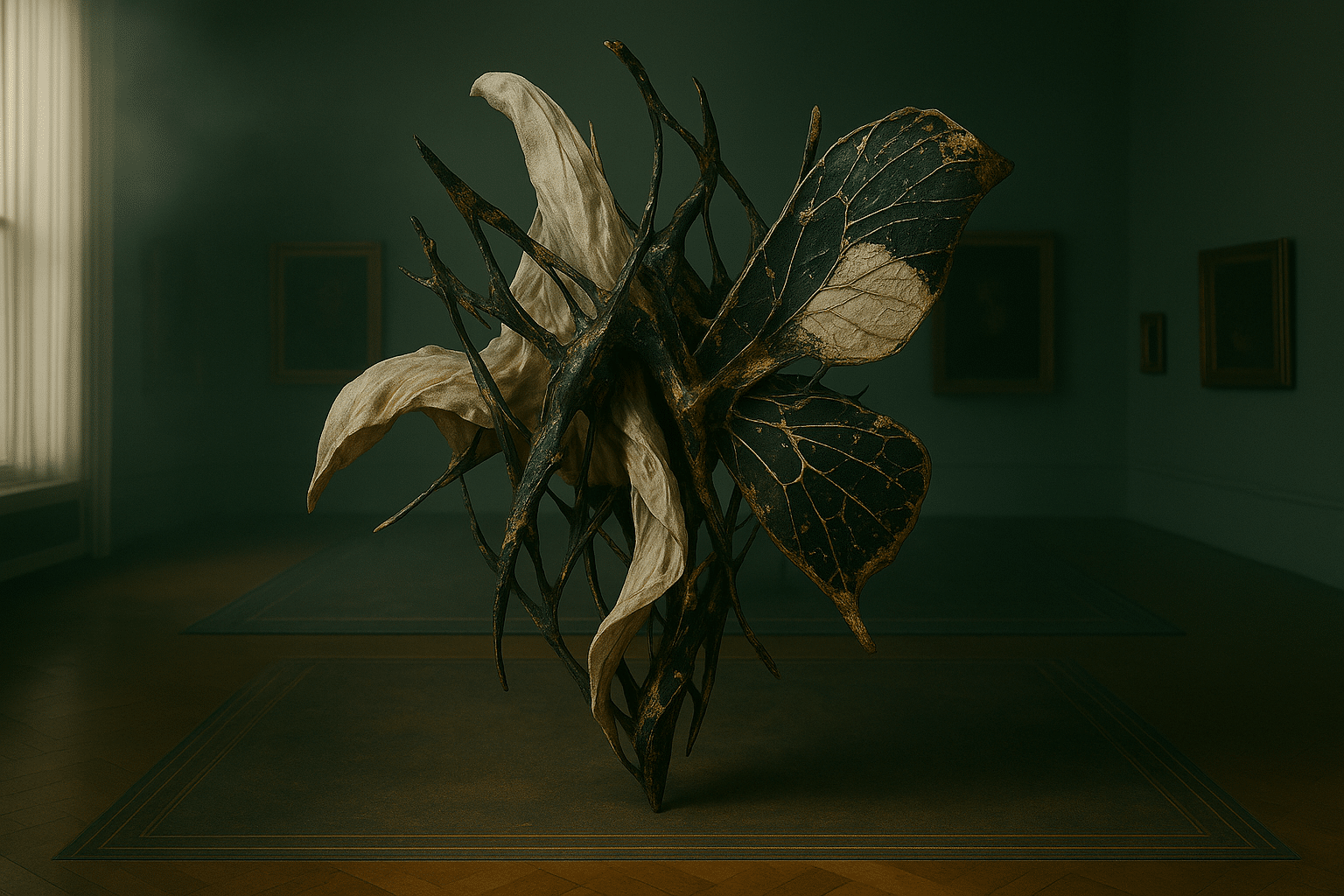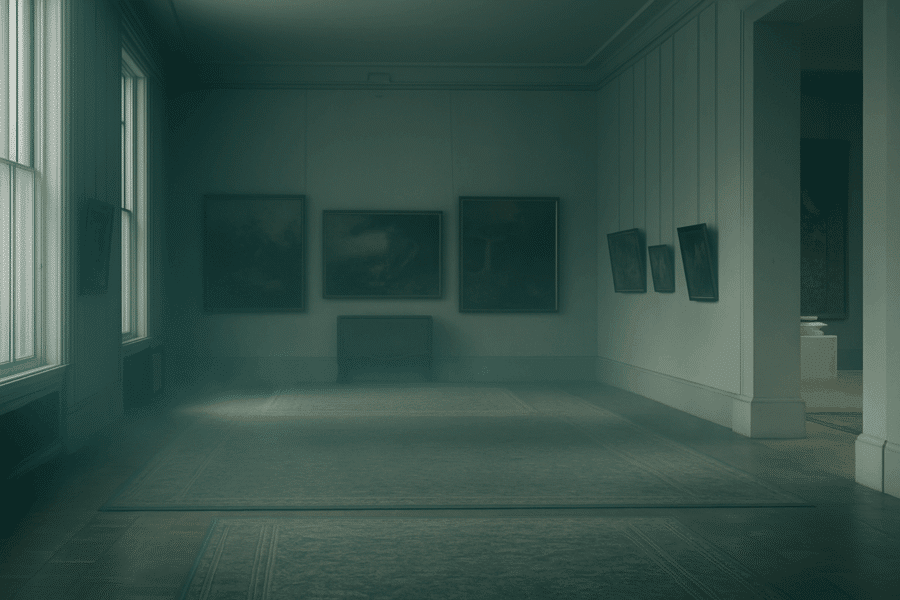
Online creation
Digital Raubkunst (Rose)
From 17 September 2025 to 28 February 2026
Jeu de Paume – Online
Aurélien Bambagioni is the guest artist for Jeu de Paume’s online creative space in 2025.
Following his film L’île artificielle (2023, film, 67 min), in which he enlists the help of AI to adapt Peter May’s novel L’île au Rébus for the screen, Bambagioni has been invited to work on a new project using artificial intelligence. Digital Raubkunst (Rose), 2025 is a project designed and produced especially for Jeu de Paume’s online creative space.
This online work invites viewers to step inside Jeu de Paume galleries in the 1940s to visit an exhibition that connects the present to the past and denounces a double reappropriation: the first linked to the history of the place and the second to the use of content by AI. The title of this piece, « Art volé digital » refers to this double spoliation.
Digital Raubkunst (Rose) is a collection of videos in which generative AI reinterprets a selection of pieces from the Rose Valland database (MNR – Jeu de Paume) of the French Museum Service. This website lists, among other things, objects looted by the Nazi government, including works of art exhibited at Jeu de Paume, in order to enable their identification and restitution. Between 1939 and 1944, the museum was requisitioned to become a transit point and warehouse for works of art looted by the Einsatzstab Reichsleiter Rosenberg. It was here that Rose Valland, an assistant curator, secretly compiled an inventory of more than 60,000 works of art seized by the Nazis from French institutions and Jewish families during the Occupation, which facilitated their restitution after the war.
Bambagioni invites a conversational tool using generative artificial intelligence to appropriate a wide variety of objects—sculptures, carpets, furniture, and jewelry—to create a new fictional work that appears suspended in the middle of the rooms, with labels specifying the dimensions of each assembled object. The synthetic voice of Rose Valland, also developed using an AI tool, accompanies the video to provide a narrative that bears witness to the curator’s work and tells the story of the objects. This narrative is essential and determines the overall fiction of the work. Similarly, the artist wanted to anchor the visitors’ experience in the precise time at which it takes place: the rooms of the Jeu de Paume appear in semi-darkness or illuminated depending on the time of connection: outside or during the museum’s opening hours.
These hybrid objects, with their strange synthetic beauty, embody and draw parallels between the monstrosity of plunder and the nonsense of image assembly by certain AI software programs. They seem to assert their authors and the context of their creation, without which they become meaningless, because each specific situation—historical, cultural, or personal—remains intrinsically linked to the work and enables its interpretation.
In the same way, these pieces contrast Rose Valland’s sensitivity, as she describes with her voice the sensitive and political material that passes before her eyes, with the indifference of AI to history.
This artistic project is also an invitation to reflect on the limits and consequences of the uses of generative AI and encourages us to take a more reflective and focused look at the images circulating on social media.
Marta Ponsa
The artwork is not accessible from a mobile phone.
BIOGRAPHY
Born in 1975, Aurélien Bambagioni is an artist, video maker, and writer. A graduate of École nationale supérieure d’art in Bourges, he took part in the first edition of the Collège Invisible, a postgraduate program at École supérieure d’art & de design Marseille-Méditerranée in 2001. Since 2005, he has been teaching connected arts at École européenne supérieure de l’image (ÉESI, Angoulême-Poitiers).
Based between Paris and the island of Groix in Brittany, Aurélien Bambagioni explores through his artistic practice the interactions between digital media, the circulation of information, and collective sharing.
In recent years, he has been studying the complex relationship between humankind and its environment, highlighting the challenges of modernity in the face of nature’s power. He integrates narrative and anticipatory elements into his films through editing and the addition of texts interweaving topography, history, and personal connections to a place, a figure, or an event. In doing so, Aurélien Bambagioni seeks to encourage reflection on the fragility and resilience of these elements, particularly in the context of climate change and obsolescence. His use of generative artificial intelligence in L’île artificielle and Digital Raubkunst (Rose) is part of his current research.
He has taken part in numerous exhibitions such as Hable con ella – Dialogue avec l’IA at Analix Forever Gallery in Geneva in 2024, L’archipel des sentinelles at Musée national de la Marine in Rochefort in 2021, La vanité du monde at Palais de Tokyo in 2012, and Nuit Blanche 2006 at Centre Georges Pompidou in Paris. He has also collaborated with Le Bal on several occasions. In 2025, he was nominated for the Opline Prize.
He is represented by Analix Forever Gallery in Geneva.

